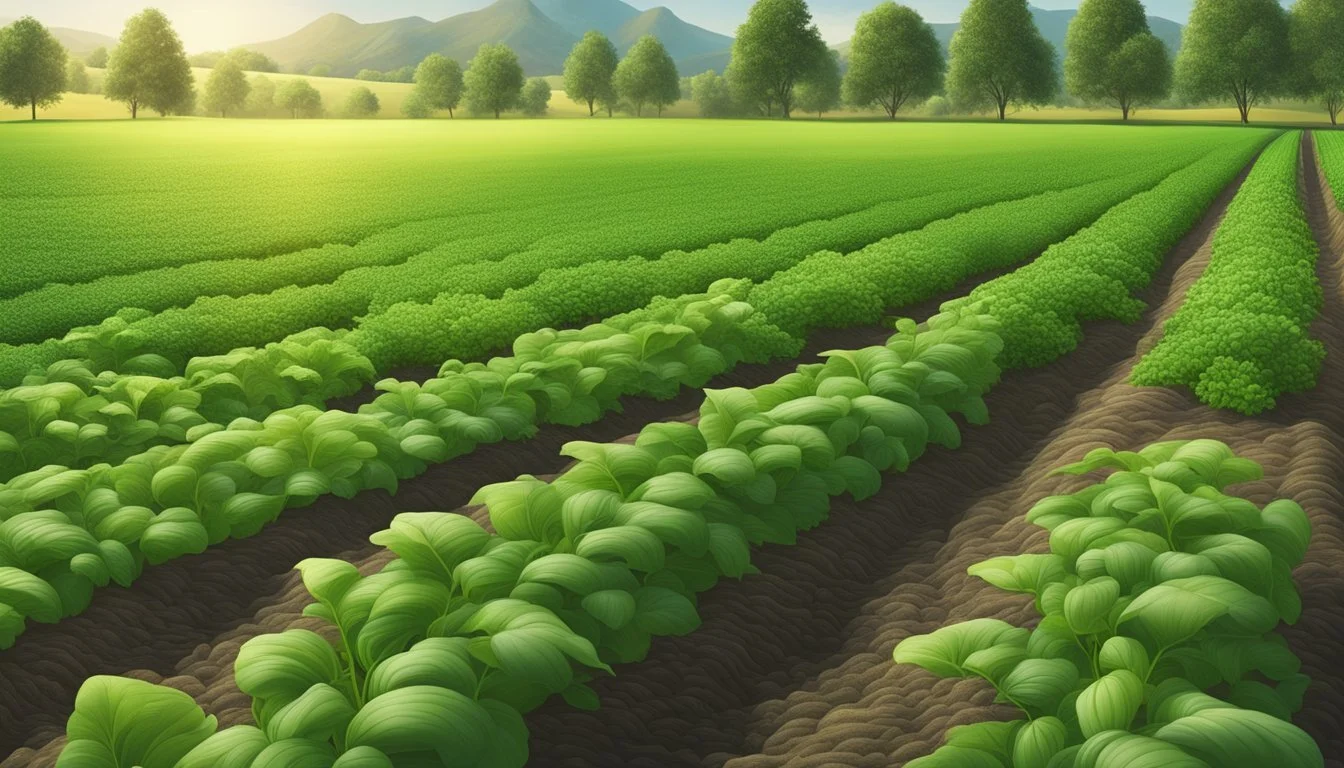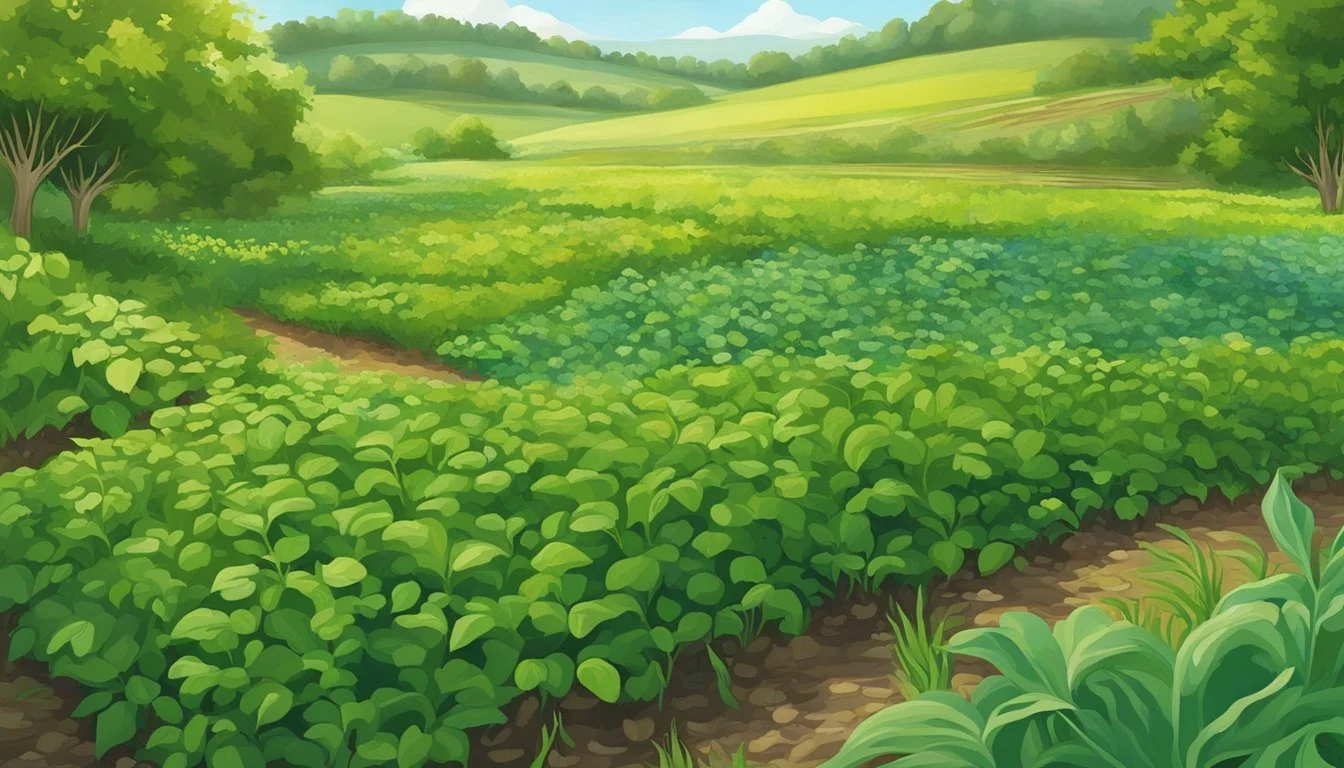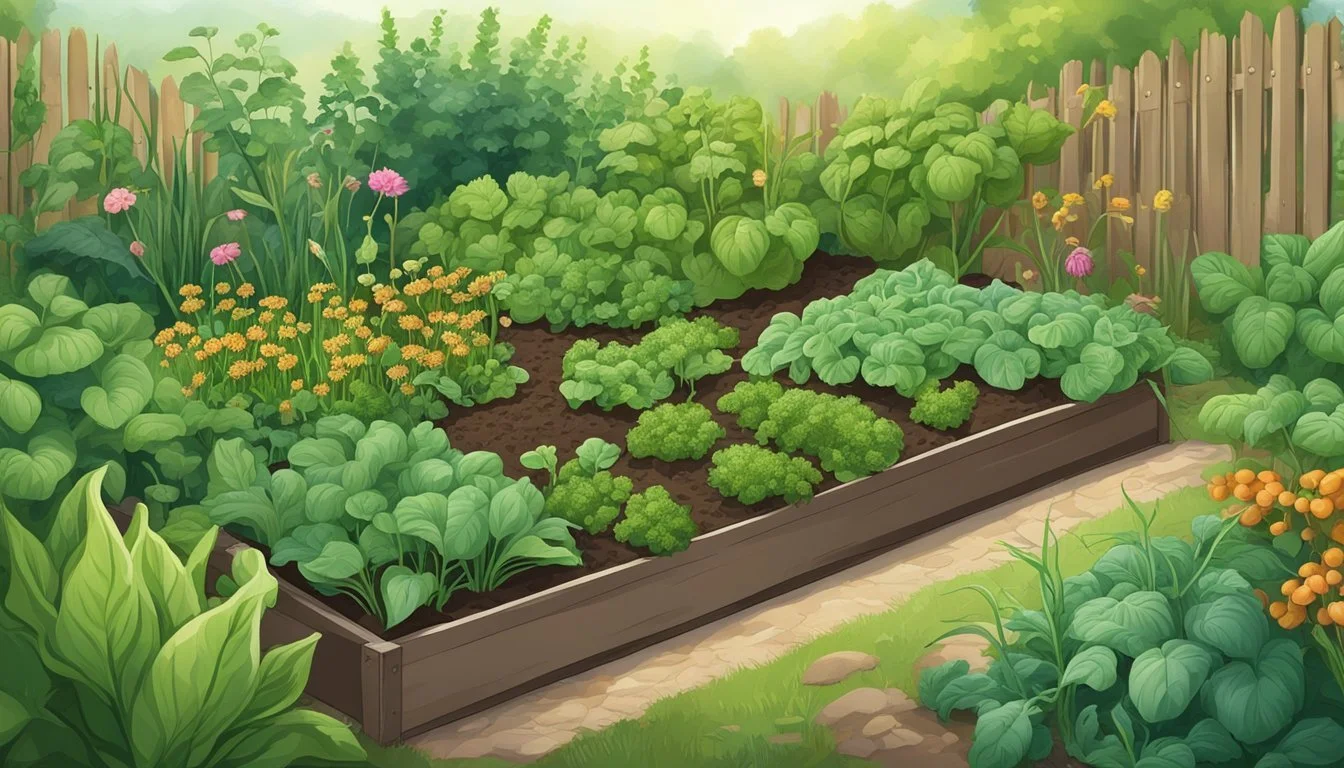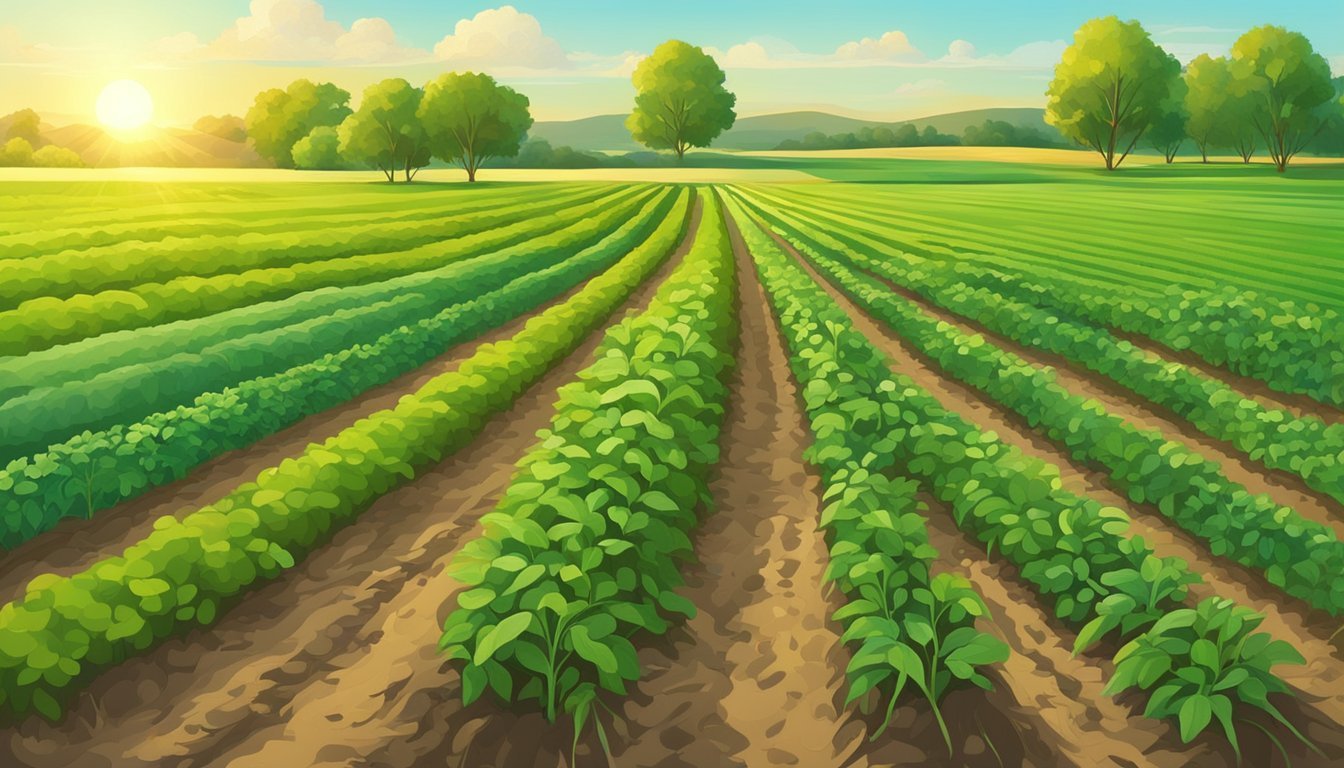The Use of Green Manures and Cover Crops
Enhancing Soil Health and Fertility
Green manure and cover crops are integral to sustainable agriculture practices. They serve multiple purposes, such as enhancing soil fertility, preventing weed growth, and protecting against soil erosion. Green manures typically refer to specific plant matter grown to be incorporated into the soil, providing it with organic nutrients and improving its structure. Cover crops, on the other hand, are primarily planted to cover the soil surface, offering similar benefits with the added advantage of potentially being harvested. These crops, which include a variety of grasses, legumes, and other plants, are a key component in the maintenance of soil health.
The implementation of these crops plays a crucial role in creating a nutrient-rich soil environment for future plantings. When turned into the soil, legumes such as clover, vetch, and peas enrich it with nitrogen, an essential component for plant growth. Meanwhile, grasses such as ryegrass, oats, and millet contribute organic matter that supports soil organisms and structure. The strategic use of green manures is a time-honored technique in established vegetable gardens, revitalizing the soil after harvest.
Beyond soil enrichment, cover crops perform additional ecological services including water conservation and pest management. They act as a living mulch, conserving soil moisture and improving water infiltration. Their presence can also attract beneficial insects and suppress the growth of harmful pests and weeds. This multifunctionality indicates why both home gardeners and commercial farmers have recognized the value of integrating green manures and cover crops into their cultivation regimens.
Benefits of Green Manures and Cover Crops
Green manures and cover crops offer a suite of advantages that support soil health, enhance crop yields, and foster a balanced ecosystem. They are instrumental in improving farm productivity sustainably.
Soil Fertility Enhancement
Green manures are capable of fixing nitrogen in the soil, a process during which they convert atmospheric nitrogen into a form that plants can absorb. Leguminous cover crops, such as clover and vetch, are particularly proficient at nitrogen fixation, thus adding vital nutrients back into the farming system and reducing the need for synthetic fertilizers.
Soil Structure and Health
The incorporation of cover crops and green manures adds significant amounts of organic matter to the soil. This organic matter improves soil structure by increasing porosity and water retention, leading to higher soil quality and fertility. Superior soil structure also supports diverse microbial life that is essential to nutrient cycling.
Weed and Pest Management
Cover crops serve as a natural barrier, both suppressing weeds and mitigating weed problems by blocking sunlight and occupying the space that unwanted plants would otherwise use. They also can attract beneficial insects, including pollinators like bees, which help control pest populations and attract pollinators for other crops.
Biodiversity and Wildlife Support
A diverse planting of cover crops can enhance biodiversity within agricultural systems, offering habitat and forage for a variety of wildlife, from pollinators such as bees to birds and beneficial predators. This biodiversity support aids in pest control and encourages a more resilient agroecosystem.
Erosion Control and Water Management
Cover cropping is an effective strategy to control soil erosion. These crops establish quickly, and their roots and foliage help to hold soil in place, significantly reducing erosion. Moreover, the improved soil structure from added organic matter helps soil absorb and retain water more effectively, improving water availability for crops.
Crop Performance and Rotation
In crop rotation, incorporating green manure crops can break pest and disease cycles. Green manures can be specifically selected to suit the needs of the subsequent crops, thereby enhancing crop performance. They can be under-sown in certain cash crops, allowing for cover cropping without taking the land out of production.
Selecting the Right Green Manure
Choosing the right green manure involves understanding the benefits and specific needs of your garden. Factors such as soil type, climate, and the main crops you intend to grow all play a vital role in this decision-making process.
Legumes for Nitrogen Fixing
Legumes, such as clover, vetch, and alfalfa, are highly regarded for their nitrogen-fixing capabilities. They harbor symbiotic bacteria in their roots that convert atmospheric nitrogen into forms that plants can absorb, enhancing soil fertility. For example, crimson clover is a popular choice for adding nitrogen and improving soil structure, while white clover and ladino are better suited for longer-term coverage and soil improvements.
Non-Leguminous Cover Crops
Non-leguminous cover crops, including cereal rye, oats, and buckwheat, contribute to soil health by adding organic matter and suppressing weeds. They differ from legumes in that they don't fix nitrogen. Instead, crops like rye and wheat improve soil structure, ryegrass and mustard help to break up compacted soil, and millets can be used in warm seasons to condition the soil in between plantings.
Seasonal Considerations for Planting
The timing of planting is critical. Winter rye and winter wheat are excellent examples of a winter cover crop that can be sown at the end of the growing season and turned into the soil before spring planting. Annual ryegrass and Italian ryegrass can be planted in fall and offer quick ground coverage to protect against erosion and leaching of nutrients. It is important to plant before the first fall frost to establish crops effectively.
Site-Specific Crop Selection
Choosing specific cover crops must also consider the garden's hardiness zone, acid soils, and nutrient-poor soils. For example, clover thrives in poor soil, improving its quality over time. In contrast, a crop like buckwheat is an excellent choice for rapid growth and phosphorus mobilization in underutilized sections of a home garden or vegetable garden. Matching the green manure to the site conditions ensures the crop will thrive and bestow the maximum benefits to your soil.
Establishing Cover Crops
Establishing cover crops effectively is crucial for enhancing soil health and providing a range of agroecological benefits. The process requires careful selection of seeds, understanding the best planting techniques, and consistent maintenance.
Seed Selection and Sourcing
When selecting seeds for cover crops, fagopyrum esculentum (buckwheat), secale cereale (rye), and phacelia tanacetifolia are common choices due to their soil improvement qualities and adaptability. It is important to determine the appropriate seeding rate and to consider using an inoculant if planting leguminous cover crops to ensure effective nitrogen fixation.
Fagopyrum esculentum: Rapid germination, good for smothering weeds.
Secale cereale: Excellent winter hardiness, helps prevent erosion.
Phacelia tanacetifolia: Attracts beneficial insects, quick to flower.
Sourcing quality seeds from reputable suppliers guarantees high germination rates and crop success.
Planting Techniques and Timing
Planting should be timed to suit the lifecycle of the crop and local climate conditions. For optimal establishment, use a rototiller or other tillage equipment to create a fine seedbed, which promotes strong seed-to-soil contact and improves germination rates.
Buckwheat: Plant in late spring to midsummer; flowers in about 6 weeks.
Winter Rye: Sow in fall; conducive for overwintering and early spring growth.
Phacelia: Versatile, can be planted early spring through late summer.
Precise planting techniques, such as drilling or broadcasting, should be guided by the specific cover crop's requirements and field conditions.
Maintenance and Management
Once established, cover crops require minimal but attentive maintenance. Regular watering ensures proper growth until the crops establish themselves. Fertilizers may not be necessary if leguminous cover crops are used due to their natural soil-enriching properties.
Irrigation: Adequate moisture is critical for germination and early growth.
Tillage: Depending on the crop, light tillage may promote tiller development.
Eventually, tilling the green manure back into the soil before flowering terminates the cover crop and recycles nutrients. Proper management aligns with sustainable farming practices, aiming to enhance soil structure and fertility without overreliance on external inputs.
Termination and Incorporation Techniques
The termination of cover crops and green manures is a critical step in managing soil fertility and preparing fields for subsequent planting. Selection of the appropriate technique depends on the crop type, desired outcomes, and equipment availability.
Tillage and Mowing Options
Tillage is a common method for terminating cover crops and incorporating green manures into the soil, effectively turning them into compost. Utilizing a rototiller or a moldboard plow, the organic matter is chopped and mixed into the soil, enhancing decomposition and nutrient release. Operators must consider soil type and moisture level to avoid compaction or structure damage. Mowing, on the other hand, cuts the cover crops at the surface level and is often used when incorporation into the soil isn't immediate. Mowing can be followed by tilling to achieve better incorporation, but on some occasions, mowed cover crops are left on the surface as mulch.
Tools for Tillage:
Moldboard plow
Chisel plow
Rototiller
Mowing Equipment:
Flail mower
Rotary cutter
Sickle bar mower
Rolling/Crimping and Winterkill
Rolling or crimping provides an alternative to tillage and mowing, especially for no-till systems. A roller-crimper can be utilized to knock down cover crops, creating a mat of organic matter that suppresses weeds and gradually decomposes to feed the soil. This action conserves soil structure and moisture while also working as a form of weed management. Winterkill is a passive method where cover crops are chosen for their inability to survive winter temperatures; they die off naturally, reducing the need for mechanical termination techniques. This method heavily depends on regional climate and the specific frost tolerance of the cover crop used.
Roller-Crimper Benefits:
Soil structure preservation
Moisture retention
Weed suppression
Winterkill Considerations:
Climate and weather patterns
Cover crop frost tolerance
Integrating into Home Gardening
Integrating green manures and cover crops into home gardening practices can significantly enhance soil quality and garden health. Specifically, the utilisation of these techniques in small spaces, alongside companion planting methods, contributes organic matter for composting, and serves as a valid testimony to their effectiveness through various success stories.
Cover Cropping in Small Spaces
Even in limited areas, home gardeners can still employ cover crops like radishes and clover to protect and nourish the soil. Tomatoes and peppers can benefit from the nitrogen fixed by leguminous cover crops such as vetch. Home gardeners should:
Plan: Measure your garden space to determine how much seed is needed.
Select: Choose cover crops that are known to be compact and don't require much room to grow.
Rotate: Use cover crops in rotation with vegetable crops to maintain soil health.
Companion Planting and Polycultures
Companion planting involves placing certain plants like beans and carrots together to enhance growth, deter pests, and maximize space. Polycultures, which mix several types of plants, can include a blend of cover crops and main crops for effective space use. Some gardening tips for companion planting include:
Planting squash under corn as a living mulch, which can act as a green manure once tilled in post-harvest.
Interplanting cover crops between rows of vegetables to suppress weeds and boost soil fertility for crops such as beans.
Organic Matter for Composting
Green manures contribute to the compost pile when turned into the soil at the end of the growth season, enriching the compost with nutrients. A home gardener might grow peas or rye as a green manure before adding them to the compost heap. This process helps in creating a nutrient-rich mix for:
Composting: Adds nitrogen and organic matter to home compost piles.
Soil Health: Improves the soil structure and water retention capabilities.
Success Stories and Case Studies
Ebooks and newsletters often share success stories of home gardeners who have transformed their small plots with the strategic use of green manures and cover crops. Specific case studies show improved yields in vegetable gardens where green manures like mustard and legumes have been used. Real-world examples include:
A gardener reporting higher yields of radishes and tomatoes after employing rye as a winter cover crop.
Community gardens that utilize green manures to maintain productive plots throughout the year.
Challenges and Considerations
Implementing green manures and cover crops can significantly benefit soil health and fertility, but there are several challenges and considerations to manage for successful integration into farming systems.
Management of Cover Crop Residue
After cover crops are terminated, the residue management is a critical step that determines the success of the subsequent crop. Residue must be dealt with in a way that does not hinder planting or emergence of the main crop. For instance, in systems that incorporate green manure into the soil, operators must ensure that the biomass is adequately broken down to avoid issues such as nitrogen immobilization, which can affect the nutrient availability for the next crop.
Balancing Nutrient Budgets
While cover crops such as legumes can fix atmospheric nitrogen, adding to the nutrient content of the soil, non-leguminous cover crops may require additional phosphorus and other nutrients. To maintain a balanced nutrient budget, farmers must carefully monitor soil fertility levels and amend as needed. The goal is to match the nutrient release with the nutrient demand of the subsequent crops, avoiding both deficiencies and excesses that can lead to environmental issues.
Pest and Disease Risks
Use of cover crops can sometimes attract or harbor pests and diseases, leading to potential weed problems, pest control, and disease management challenges. A well-planned cover crop system can suppress weeds through competition, but if not carefully managed, certain cover crops can also become weed issues themselves. Furthermore, some cover crops may serve as alternate hosts for pests and diseases, requiring careful selection and rotation practices to minimize these risks.
Future Directions and Innovations
Emerging trends in the use of green manures and cover crops are shaping the future of sustainable agriculture. Innovations in breeding, adaptations to climate change, economic policies, community engagement, and technological advancements offer new pathways to enhance soil health and farm resilience.
Breeding Advancements for Cover Crops
Research in seed technology is propelling breeding advancements, focusing on traits such as drought resistance and nutrient efficiency. Breeding programs are increasingly developing cover crop varieties tailored to specific environments and agricultural needs.
Climate Change Adaptation Strategies
As climate change alters weather patterns, cover crop selection and management must adapt. Research into drought-resistant species and timing of planting can help maintain cover crop benefits, even in changing climatic conditions.
Economic Analysis and Policy Incentives
Economic analysis is crucial to understanding the long-term benefits of green manures. Policies and subsidies can incentivize their adoption, though accurate valuation of their ecological contributions remains a key challenge.
Educational Outreach and Community Building
Through workshops and webinars, educational outreach efforts are crucial. They can both spread gardening tips and bolster community gardens. These activities build knowledge and engagement, laying the foundation for resilient agricultural practices.
Technological Integration
Precision agriculture technologies such as agricultural drones and soil sensors are becoming integral to managing cover crops efficiently. These technologies enable farmers to monitor growth and soil health with unprecedented precision, optimizing the benefits of green manures.
Conclusion
The strategic integration of cover crops and green manures into gardening and agricultural practices offers a multitude of benefits. When managed effectively, these plants enhance soil fertility by contributing essential nutrients, such as nitrogen, and improving soil structure. Farmers and gardeners embrace cover crops to suppress weeds, manage soil erosion, and promote biodiversity.
Incorporating green manures and cover crops, such as legumes, grasses, and brassicas, provides a natural and cost-effective alternative to synthetic fertilizers. These crops are grown not for harvest, but to be turned back into the soil, where they decompose and release nutrients. This process not only enriches the soil but also encourages the presence of beneficial microorganisms and insects.
It is important to implement proper timing and specific management techniques to realize the full potential of these plants. For example, sowing cover crops in spring is beneficial, especially in new plots, to improve soil quality and choke out weeds. Similarly, to establish a green manure crop, one should clear the planting area of debris, sow seeds uniformly, and incorporate the seeds into the soil with a light watering.
Ultimately, the well-considered application of cover crops and green manures represents a sustainable approach to land management. Their contribution to long-term soil health and ecological balance positions them as invaluable tools in the quest for responsible and productive farming methods.





